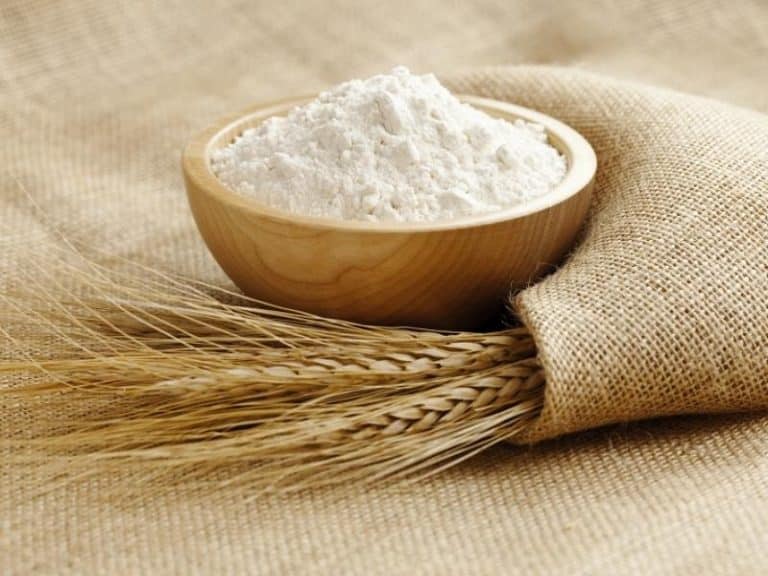Food Mill Substitutes: The Best Alternatives 2023
A food mill is a manually operated kitchen utensil that pureés or processes food into a paste. Made of stainless steel, plastic, or aluminum, a food mill has three pieces: a bowl, a grinding plate, and a handle.
A basic food mill has one grinding plate, while more sophisticated models come with numerous grinding plates, offering options for a variety of food texture results.
To operate a food mill, position it on a table or flat surface, place food on the grinding plate, and turn the handle. The food is forced through the holes in the grinding plate and falls into the bowl in a mashed or pureéd form. The grinding plate usually separates the seeds and peels, which are left behind on top of the grinding plate.
A few common alternatives to a food mill are an electric food processor, a quiet blender, a potato masher, and a potato ricer. Some utensils, like strainers and flat spoons, can be used together to achieve similar results to those of a food mill.
8 Best Substitutes for a Food Mill
A food mill isn’t a common kitchen item that everyone owns, and some people don’t have access to one. There are many alternatives that give the same or a similar result, many of them common kitchen utensils that most people have in their kitchens.
Food Processor
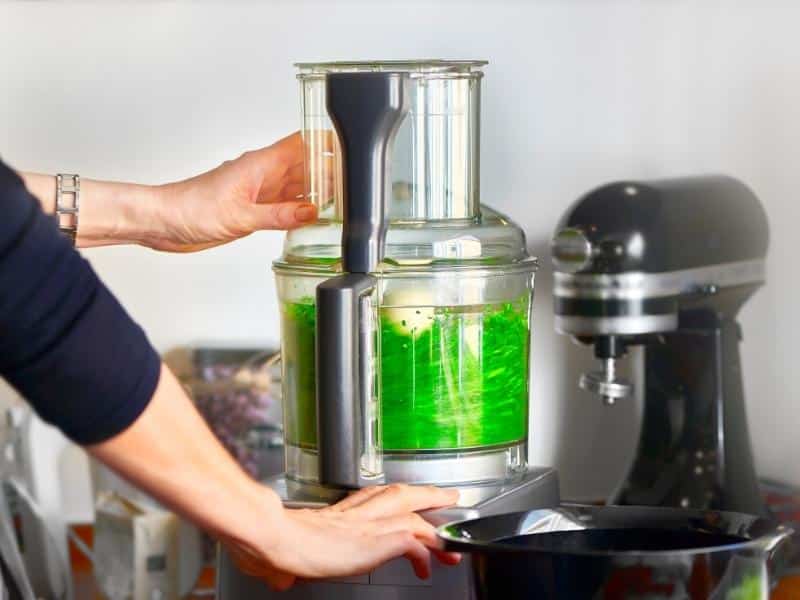
A food processor is an electrical appliance designed to chop or pureé food. Most food processors come with numerous blades and attachments, offering a choice of textures.
Use a food processor in place of a food mill to make sauces, soups, mashed potatoes, baby food, and other pureés. With its pulse feature, a food processor allows you to choose between a coarse or fine texture.
If you want to separate peels and seeds from fruits or veggies, peel and remove the seeds from the food before processing, otherwise the unwanted parts will be incorporated into the mashed food.
A food processor is an electric machine that gets the job done more quickly than a food mill. Expect to pay around $40 for a basic food processor and $1,500 for a professional model.
Jug Blender
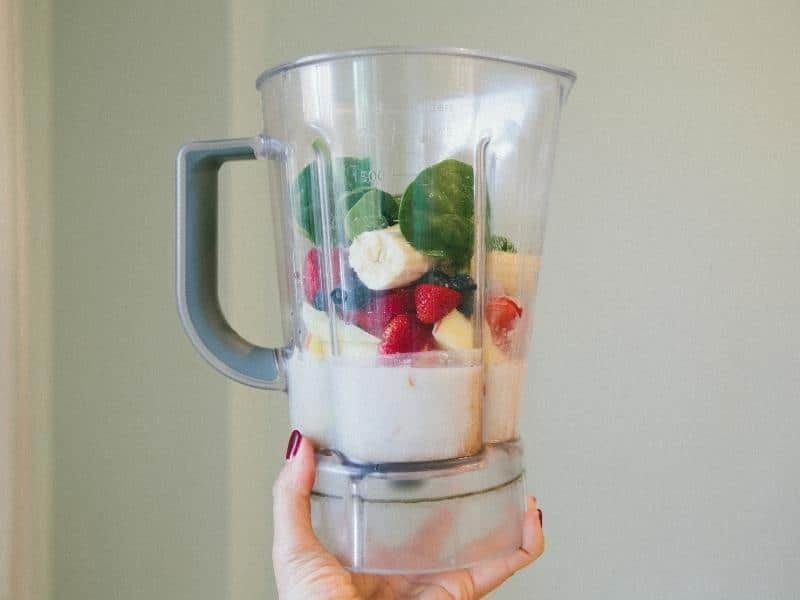
A jug blender is an electrical appliance with a blade-fitted jug that fits onto a motor. Place food in the jug and switch on the motor to chop or pureé foods.
Use a jug blender instead of a food mill to make pureés, soups, smoothies, and sauces. Remove the skins and seeds before placing vegetables or fruits in the blender to avoid mixing the waste with the resulting processed food.
Because it’s electric, a jug blender is easier to operate than a food mill and saves time and effort. Jug blenders cost around $40 for a simple model and $900 for a professional blender with industrial capacity.
A Stick Blender
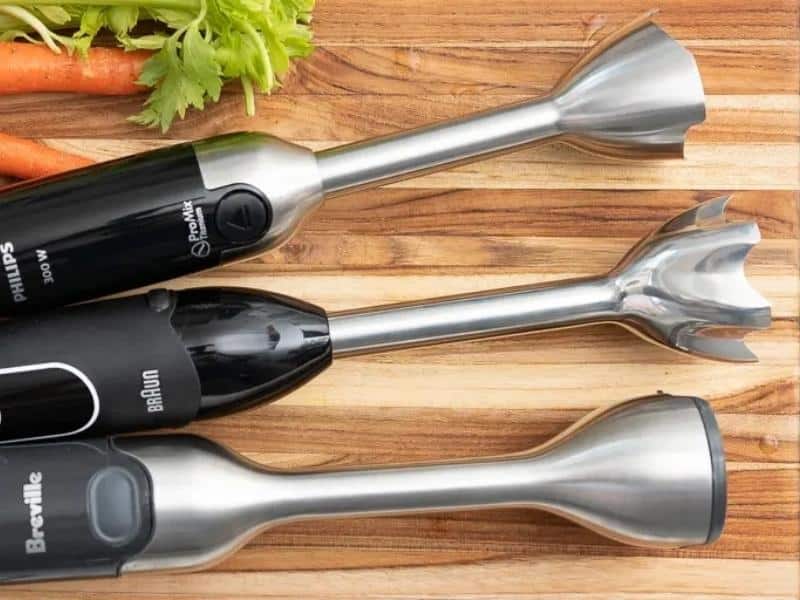
A stick blender, consisting of a rotating blade on a stick attached to an electric motor, is a simple version of a jug blender. Place the food in a deep bowl or jug, insert the stick blender, and switch it on. The blade spins at high speed, chopping up the food.
The longer you blend the food, the smoother the texture becomes, making it easy to control how coarse or smooth the final product is. A stick blender is a good substitute for a food mill for making small quantities of pureéd foods.
A stick blender is quick and convenient to use, and is great for sauces and soups, but cannot be used to process dry foods. Some liquid is needed to create a smooth consistency.
Stick blenders range in price from $10 to $100, making them affordable and accessible to many people.
A Potato Ricer
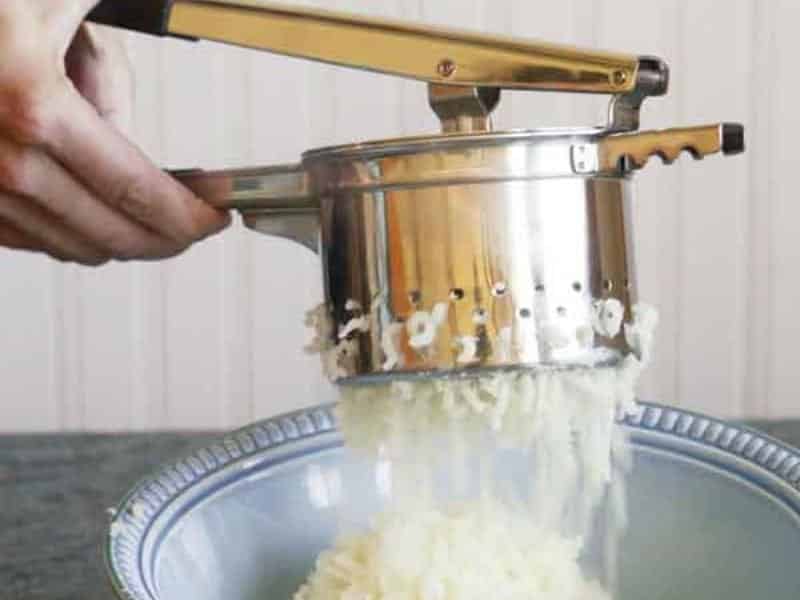
Like a food mill, a potato ricer is a manually operated tool that is great for making mashed potatoes, pureéd veggies, and baby foods. A potato ricer consists of a handle attached to a cup with a perforated, removable plate.
It works by placing food in the cup and forcing the food down through the holes by pushing the handle down. The handle can be either on the side or the top, depending on the make.
Usually made of stainless steel, most potato ricers come with a choice of bottom plates, giving texture options that range from coarse to smooth. A potato ricer gives a similar result to a food mill, but can only mash small amounts of food at a time.
Potato ricers work best with small amounts of cooked foods, like potatoes and vegetables, but aren’t suitable for grinding meat or hard raw vegetables. Potato ricers cost from $12 to $50.
A Grater

A manual grater is a handy food mill substitute that is found in most kitchens and is useful for processing foods like cheese, potatoes, carrots, and other vegetables. A grater can either have a single grating plate for coarse-textured results, or it can be four-sided, offering four different texture options.
A grater can’t grind raw meat or fish because these foods are too soft. Use a grater by holding it over a bowl with one hand and rubbing the food up and down firmly against the grater’s surface with the other hand. The grated food falls into the bowl below.
A grater creates a coarser texture than a food mill but is a useful alternative because graters are readily available. This tool costs $5 for a simple grater and $150 for an advanced grater with an attached container to catch the food.
A Colander and Spatula or Spoon
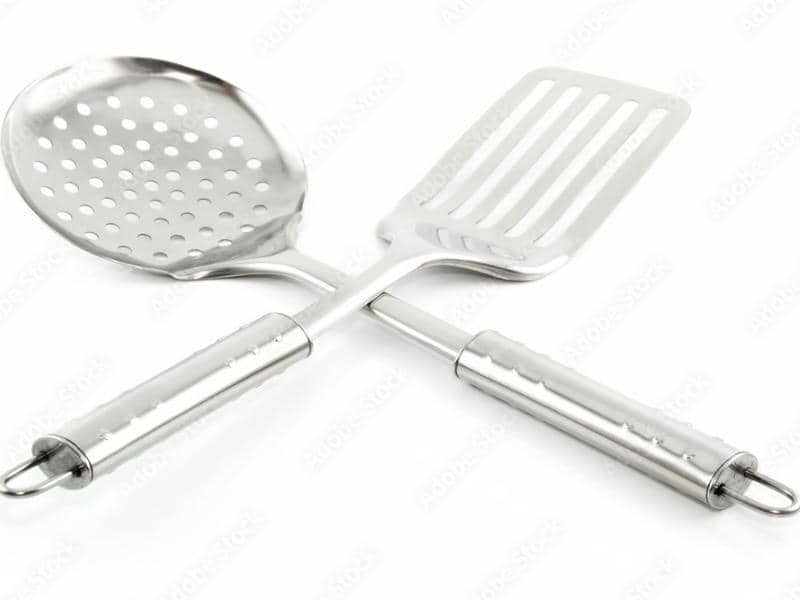
A colander is a large round perforated bowl, designed for draining pasta or washing fruits and vegetables. Because it has holes at the bottom, a colander works as a substitute for a food mill but gives a coarser finished product.
Position the colander over a bowl right side up, place food in the colander, and push the food through the holes with a spatula or flat spoon. The mashed food lands in the bowl.
This method only works for cooked foods or soft fruits like bananas. Raw veggies like potatoes and carrots are too hard to push through the colander’s holes.
There are many different types of colanders available, priced from $3, for a cheap plastic colander, to $400 for a durable stainless steel one.
A Strainer (or Sieve) and Spoon
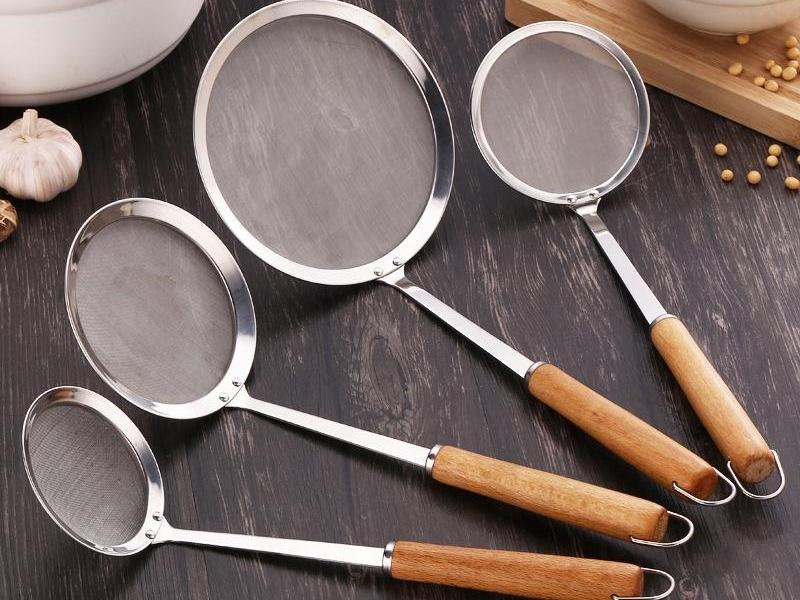
Commonly found in most kitchens, a strainer is similar to a colander, but with finer holes and made of wire. Use a strainer and a spoon to push the food through the strainer’s holes in the same way that you’d use a colander.
A strainer provides a smoother texture than a colander and is useful for making pureés such as baby foods, and sauces. This tool isn’t suitable for grinding meat or fish because these foods won’t go through the fine holes of the strainer.
Expect to pay $2 for a simple wire mesh strainer or $300 for a high-quality stainless steel strainer.
A Potato Masher
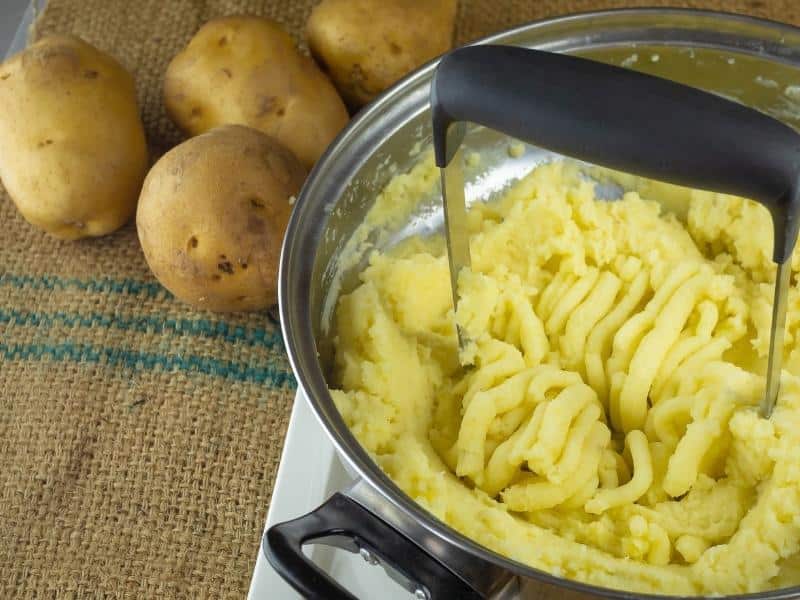
A potato masher is a common kitchen utensil consisting of a handle attached to a flat perforated plate. Use a potato masher instead of a food mill to mash cooked veggies like potatoes and soft or cooked fruits.
Place the food in a bowl and press down hard with the potato masher to force the food through the holes. Repeat the process a few times for a smoother texture. Using a potato masher is labor-intensive, and is only suitable for mashing small quantities of food.
Potato mashers are priced from $2, for a cheap plastic potato masher, to $90 for a high-quality stainless steel masher.
How to Choose an Alternative to a Food Mill
The most common uses for a food mill include grinding food, making mashed potatoes, mashing veggies, and preparing baby foods and other pureés.
When substituting another utensil for a food mill, consider whether the substitute can cope with the task. For example, some substitutes can’t cope with hard foods, while others aren’t big enough for large quantities of food. Certain utensils are good for pureéing cooked foods but aren’t suitable for grinding raw meat or hard vegetables.
Food mill substitutes are available at a wide range of prices, with the price often reflecting the quality of the utensil. When choosing an alternative to a food mill, follow your budget, but also ensure that the utensil is strong enough to handle the food you want to mash.



